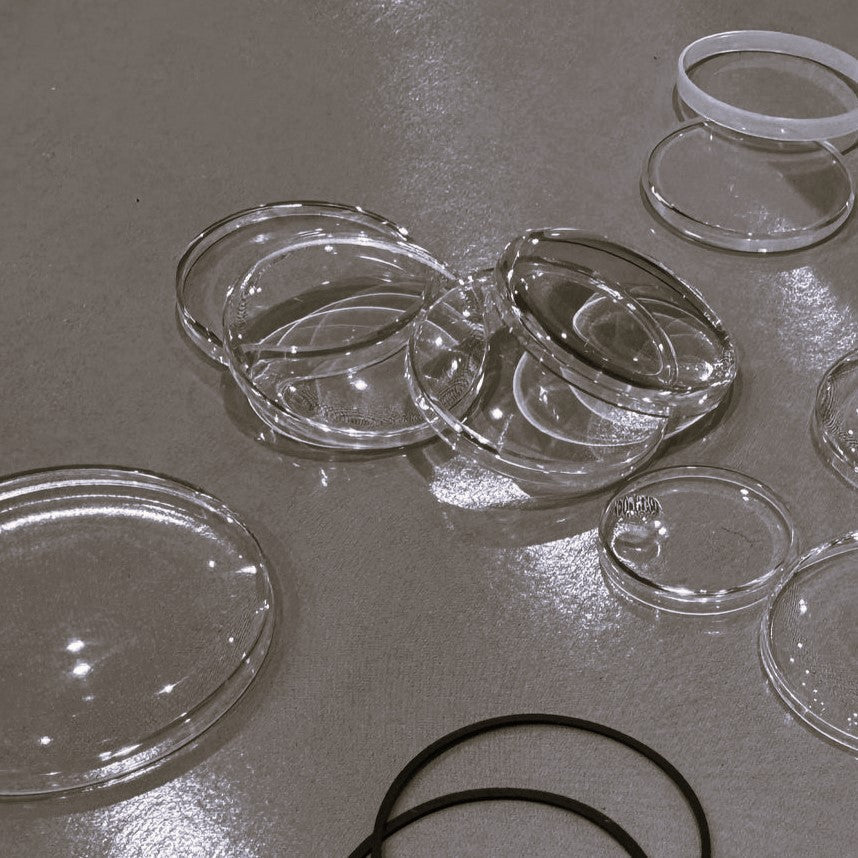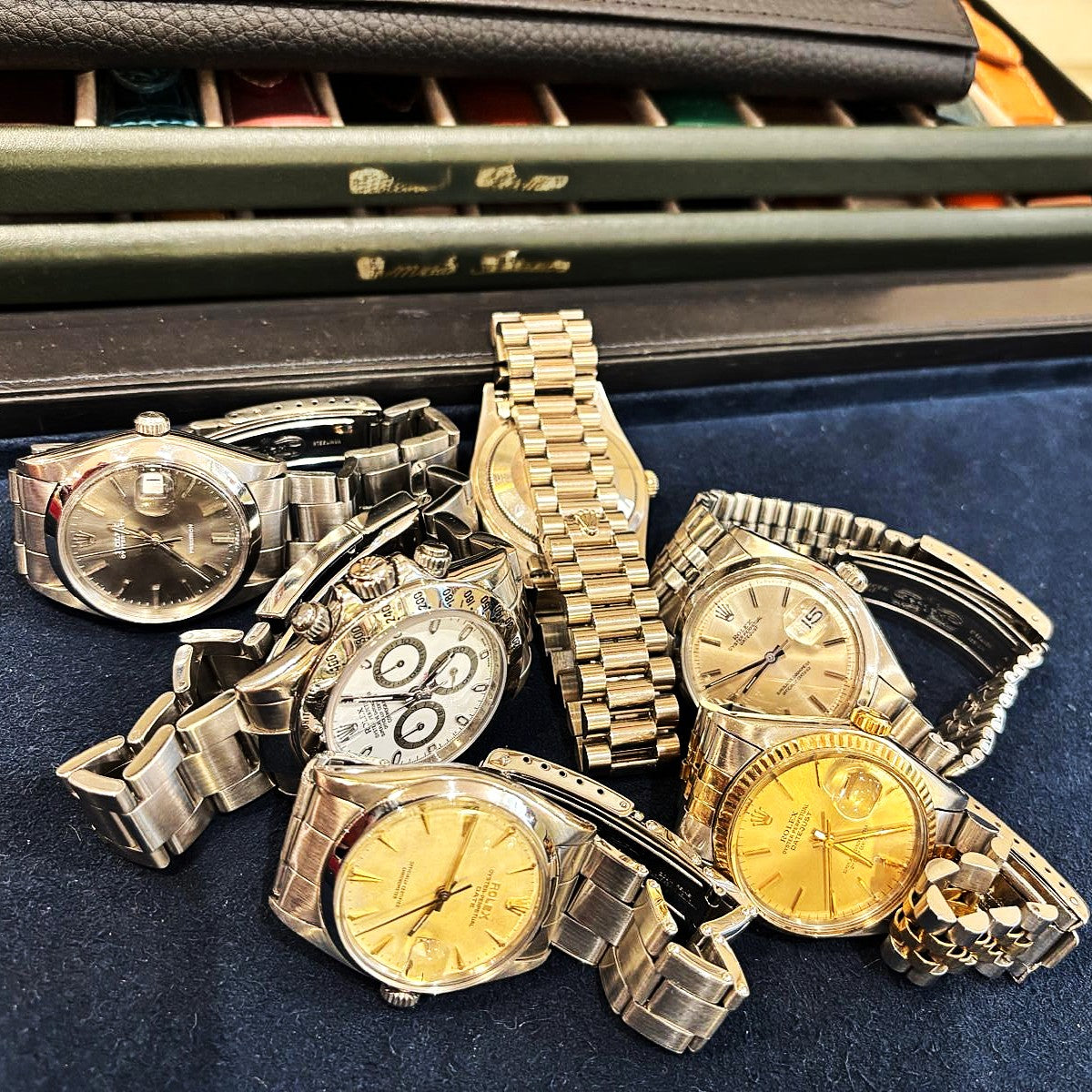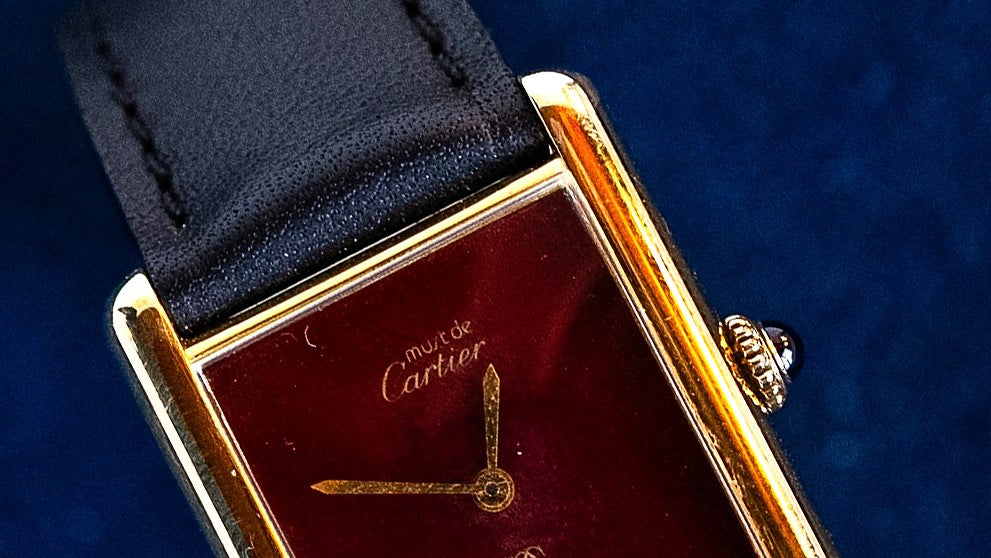
Watch Crystal, the Unsung Hero of Horology
The Evolution of Watch Crystals: How technology transformed the reliability and protection of our timepieces throughout the 20th century
The history of watch crystals is intimately linked to that of horology itself. This component, often overlooked but essential, reflects the evolution of technologies, materials, and design philosophies that have shaped our industry since its origins.
The Crystal Origins: Late 19th Century to the 1930s
Before the era of synthetic materials, watchmakers had no choice but to use natural glass to protect the dials of their creations. The transition from pocket watches to wristwatches in the early 20th century, accelerated by military necessities during World War I, posed new challenges for manufacturers.
These early crystal glasses, imported from major European glassmaking centers, were laboriously hand-ground and polished to fit perfectly into cases. Despite all the care taken in their manufacturing, they remained fragile, susceptible to breaking upon impact, and relatively expensive to replace.
This period nonetheless saw important innovations. German and Swiss manufacturers experimented with various glass compositions, while prestigious houses such as Omega, Longines, and Patek Philippe developed hardening techniques to improve the resistance of their crystals. The quality of the glass fitting gradually became an indicator of a watch's excellence, reflecting its creator's craftsmanship.
The Acrylic Revolution: 1930-1970
The introduction of acrylic crystals in the 1930s, following revolutionary developments brought about by the availability of "Acrylic" material (polymethyl methacrylate or PMMA) produced by major chemical groups (Rohm and Haas, ICI, or DuPont), marked a decisive turning point in watchmaking history.
Known as hesalite or plexiglass, these plastic materials offered revolutionary advantages over traditional glass. Their impact resistance far surpassed that of glass, allowing watches to withstand rougher conditions of use. Lighter, more economical to produce, and easily repairable (a simple polishing operation was sufficient to remove superficial scratches), they quickly conquered the watchmaking industry.
Subsequently, iconic pieces adopted this innovation: the first Rolex Submariner and Datejust models, the legendary Omega Speedmaster "Moonwatch," and even the elegant Patek Philippe Calatrava. One of the material's greatest achievements came from NASA which, after numerous rigorous tests, specifically chose hesalite for its space watches (on Omega's Speedmaster), for its obvious advantage that, unlike glass, it wouldn't fragment into dangerous particles in zero gravity.
The Mineral Glass Era: 1960-1980
While acrylic dominated the market, a new generation of mineral crystals was emerging. Thanks to specific chemical and thermal treatments, these crystals offered significantly superior scratch resistance while maintaining good impact protection.
Seiko was one of the pioneers in this field with its Hardlex crystal, making this technology accessible to the general public.
In the luxury segment, Cartier's Tank watches were among the first to adopt this innovation, followed by Audemars Piguet's revolutionary Royal Oak in 1972. This transitional period demonstrates a constant search for balance between tradition and modernity, between the warm aesthetics of plexiglass and the increased exclusive elegance of mineral glass.
The Triumph of Sapphire: 1970 to the Present Day
The advent of synthetic sapphire crystal (crystallized aluminum oxide) as the material of choice for watch crystals represents the pinnacle of this quest for perfection.
With a hardness of 9 on the Mohs scale (only diamond is superior), this material revolutionized the protection of luxury watches. Practically impossible to scratch under normal conditions of use, sapphire offered exceptional transparency and unmatched longevity.
Jaeger-LeCoultre stands among the pioneers in using sapphire in luxury watches. In the 1970s, the manufacture began incorporating sapphire crystals in some of its high-end models.
An important moment in sapphire crystal history occurred when several Swiss manufacturers collaborated with companies specializing in advanced materials to develop more efficient production processes. These collaborations gradually reduced costs and improved the quality of sapphire crystals.
Major watchmaking houses progressively adopted this technology: Rolex began its conversion in the late 1970s and completed it in the early 1980s, Patek Philippe finished its transition to sapphire in the late 1980s, while Audemars Piguet completed its transition around 1987-1989. Today, sapphire crystals benefit from sophisticated anti-reflective treatments and can be shaped into complex forms, from domed crystals to asymmetrical designs, demonstrating the technical refinement achieved by the industry.
The Significance for Collectors
For vintage watch enthusiasts, the type of crystal is not a trivial detail but an essential element of authenticity. A period-correct crystal on an antique watch preserves its historical integrity and value. Knowledgeable collectors can recognize the distinctive visual warmth of an original plexiglass (or "plexi" in watchmaking jargon) or the characteristic refraction of a vintage mineral glass. Certain phenomena, such as the "tropical" effect where certain acrylic crystals interact with UV light to create a unique patina on the dial, are particularly sought after and valued by enthusiasts.
This journey through the evolution of watch crystals reminds us that horology is an art in perpetual tension between tradition and innovation. From the artisanal glass of the early days to today's high-tech sapphire, each stage reflects the concerns, technologies, and aesthetics of its era. For the enlightened amateur, the crystal is not simply a functional element protecting the dial, but an indelible mark of the fascinating history of timepieces and the expertise of the great legendary manufacturers of our industry





